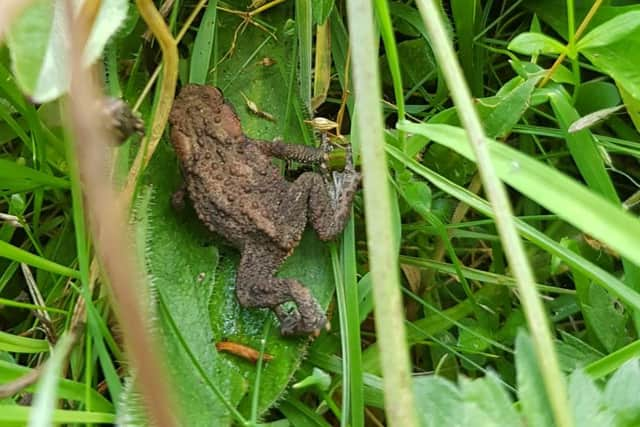Fife opencast coal mine to be reforested to create home for rare amphibians
and live on Freeview channel 276
The Blair House project is part of a drive by Forestry and Land Scotland (FLS) to repurpose a number of brownfield sites, while locking up carbon and improving the environment for protected species and humans.
Blair House is already home to significant populations of amphibians, including European protected species such as the great crested newt, which are attracted by the ponds and wetlands that are commonly found on old opencast mining sites across Scotland.


Advertisement
Hide AdAdvertisement
Hide AdWhile some species, such as the common frog, are doing reasonably well in the UK, other amphibians across UK and Europe more generally are in long-term decline and require active habitat management.
Once a common sight in back gardens and ponds everywhere, common toads, for example, have seen populations declining by 68 per cent over the past 30 years.
Together with a group of corporate volunteers from NatWest, and in partnership with The Conservation Volunteers, FLS is planting a new woodland on the former mine site to complement the productive plantation also being created.
About 80,000 trees will be planted by the time the project is complete.
Advertisement
Hide AdAdvertisement
Hide AdJuli Titherington, Forestry and Land Scotland’s environment advisor, said: “Once a common sight in back gardens and ponds, habitat fragmentation, the draining of ponds and wetland areas and a lack of suitable habitats are all factors in the continued decline in creatures such as toads and newts.
“By giving them a helping hand – by creating artificial, overwintering habitats – we can aid their recovery in the short term while the new woodland establishes to create natural hibernacula.
“We’ve selected the tree species to best match the local conditions and to provide habitats for animals and a lovely place to enjoy for human visitors.
"We’ve also taken into account climate models and likely warmer temperatures.
Advertisement
Hide AdAdvertisement
Hide Ad“Along with all of Scotland’s woodlands, this new woodland will absorb carbon from the atmosphere while it grows, helping to mitigate climate change, while ensuring a long term supply of timber.”
Thank you for reading this article on our free-to-read website. We're more reliant on your support than ever as the shift in consumer habits brought about by coronavirus impacts our advertisers.
Please consider purchasing a subscription to our print newspaper to help fund our trusted, fact-checked journalism.
Comment Guidelines
National World encourages reader discussion on our stories. User feedback, insights and back-and-forth exchanges add a rich layer of context to reporting. Please review our Community Guidelines before commenting.
